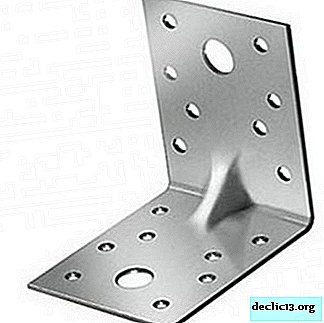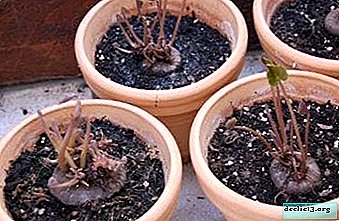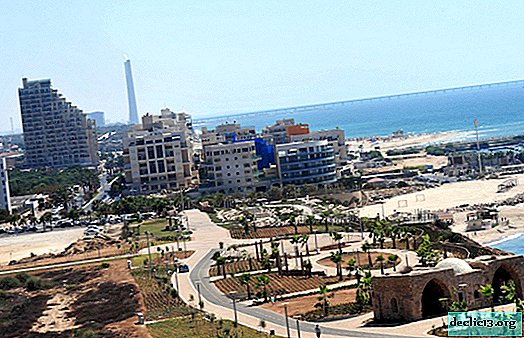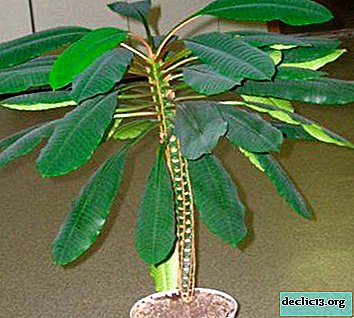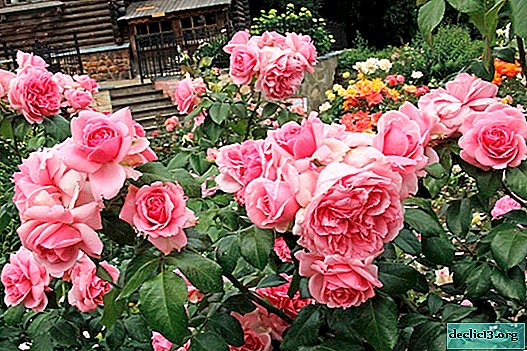Two ways to breed prickly pears, their advantages and disadvantages, as well as step-by-step instructions for planting a cactus
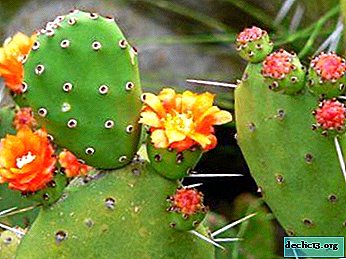
The massive place for the growth of prickly pear is Mexico, the regions of the Americas, the West Indies. There are types of prickly pears that have been brought to the Mediterranean, Australia, India and even to the south of Russia, where they feel great. Some species of this genus of the cactus family in nature grow up to 5 m tall. Opuntia has juicy flat stems dotted with large and small spines. Cactus blooms with beautiful flowers in yellow, orange and red hues. In this article, we learn about the characteristics of prickly pear breeding, types of reproduction and caring for the plant after the procedure.
What season is the best time to propagate cactus?
Due to its exotic appearance and beautiful flowers, prickly pear is very popular in home gardening. Its reproduction is not very complicated, but there are some peculiarities.
The ideal time for breeding cactus is spring and summer.. Cuttings easily root from May to September, and seeds are best sown in the month of March. If you multiply prickly pear prickly pear during this period, difficulties with rooting are quite rare, as small plants are filled with vitality.
But in winter, the young sprout may not take root, since winter for cacti is a time of rest. This should be done only if the prickly pear is saved, if the plant is sick and can die completely.
Material and pot size
For landing of prickly pear no matter what material the pot is made of, any flower vase will don It should be wide and shallow. The main factor is the mandatory presence of a drainage hole at the bottom of the tank. The hole can be one large (up to 0.5 mm in diameter) or several small.
If it is planned to install a pot of cactus on furniture and water flow is undesirable, it is necessary to form a thick layer of drainage at the bottom of the pot. The size of the pot depends on the size of the plant. In a large capacity, the cactus will grow roots and grow more slowly.
Land composition
Prickly pear, like all cacti, prefers granular and loose earth. Such land can be created using sand, vermiculite, gravel. The soil for cacti should pass water and air well and not contain organic fertilizers (manure, bird droppings, etc.), since nitrogen negatively affects the development of these plants.
 There is a universal soil composition suitable for prickly pear:
There is a universal soil composition suitable for prickly pear:
- 2 parts of clay-turf land that does not contain the roots of plants and grass;
- 2 parts of leaf humus (without knots and twigs);
- 2 parts of large clean river sand;
- 1 part, consisting of an equal amount of charcoal and broken brick (finely divided and cleaned of dust).
At 3, 5 liters of this mixture, it is useful to add a teaspoon of crushed eggshell or crushed chalk, a handful of fine vermiculite and a teaspoon of superphosphate.
Seed growing
The advantage of seed propagation is that a plant grown from seeds is more viable and stronger. A cactus that emerged from a seed, from birth, has adapted to environmental conditions. He does not need to survive the transplant, get used to the new microclimate and the care system.
The disadvantage of this method is the poor visualization of the emergence of seedlings at the initial stage. Rare types of prickly pear, which do not give children and processes, can only be propagated by seed.
How to choose and prepare seeds?
Opuntia seeds have a very hard shell, therefore, in order for them to sprout, before planting, they should be scarified with one of two options:
- process the hard shell with sandpaper and fill with water for a day;
- soak the seeds for several days.
For disinfection, the seeds must be lowered for 15-20 minutes in a weak solution of manganese before sowing.
Step-by-step instruction
When propagating prickly pears with seeds, it is necessary:
- prepare a container with a diameter of about 10 cm and a height of 3-7 cm with a hole for drainage;
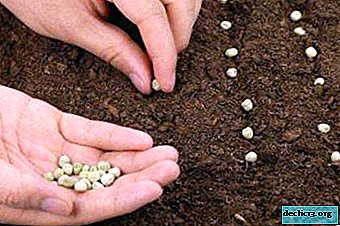 fill the container with a sterilized soil mixture (1 part of charcoal, 1 part of vermiculite and 2 parts of leaf humus), not reaching the top edge of the pot 20 mm;
fill the container with a sterilized soil mixture (1 part of charcoal, 1 part of vermiculite and 2 parts of leaf humus), not reaching the top edge of the pot 20 mm;- prepared seeds evenly sow on the surface, sprinkled with a thin layer of soil (5-10 mm);
- sprinkle the crop from the spray gun.
To get successful seedlings for them, it is necessary to create favorable conditions:
- provide bright diffused lighting;
- monitor soil moisture;
- provide a temperature regime suitable for a particular type of prickly pear.
The minimum seed germination time is one month. The percentage germination of prickly pear seeds depends on the time and storage conditions. More fresh seeds germinate amicably.
Attention! During seed germination, the central stem of young prickly pear is first cylindrical, but becomes flat, gradually increasing in diameter.We suggest you watch a video about the reproduction of prickly pear from seeds:
Cuttings
Cuttings considered the easiest way to breed prickly pears. However, with prolonged and frequent propagation of the cactus by cuttings, the quality of the plant becomes lower.
How to choose and prepare cuttings?
 When propagating by cuttings, it is important that the children cut for planting are fully ripe. The segments can be used only after the complete fall of the cylindrical leaves growing from the areoles.
When propagating by cuttings, it is important that the children cut for planting are fully ripe. The segments can be used only after the complete fall of the cylindrical leaves growing from the areoles.
- You need to cut the stalk with a sterile blade, and sprinkle the places of cut of both parts of the plant with crushed charcoal or sulfur powder.
- The shank must be dried in an upright position by placing it in a glass.
- When the cut is tightened, the process can be rooted.
Step-by-step instruction
After the cut point of the cuttings has dried, it can be rootedby following these steps:
- prepare one-time plastic cups with previously made drainage holes in the bottom;
- fill the cups with the soil mixture, as for an adult plant;
- deepen the stalk into the substrate by 2-3 cm.
The conditions for rooting the cuttings are the same as for an adult plant, but without top dressing. After 3-4 weeks, the first roots should appear.
Important! The cuticle will be more viable if you cut growing closer to the top of the cactus.We offer you to watch a video about the grafting and rooting of prickly pears:
Is it possible to plant in open ground?
Prickly pears can be planted in open groundbut the southern regions of Russia, Crimea or the Caucasus, where winters are very mild, are most suitable for this.
 An ideal place for planting prickly pear prickly pears in open ground will be a well-lit and sheltered from the wind place. Such a place can be an alpine hill, its upper part. For a cactus, it should be warm in summer and dry in winter. Drainage is also required.
An ideal place for planting prickly pear prickly pears in open ground will be a well-lit and sheltered from the wind place. Such a place can be an alpine hill, its upper part. For a cactus, it should be warm in summer and dry in winter. Drainage is also required.
The soil for prickly pear, planted in open ground should be light, loose, sandy, with fine gravel and expanded clay. So that the cactus does not rot during irrigation, its root neck should be sprinkled with fine gravel. During the summer, prickly pear will grow and get stronger.
There are winter-hardy blooming types of prickly pears:
- polycantha;
- Darwin
- pheocanthus;
- fragmentis;
- imbricate.
Plant care after planting
Watering and feeding
In the summer, a cactus must be regularly watered, despite the fact that its leaves accumulate a lot of fluid. If there is not enough moisture, the plant will begin to wither. At the end of summer, the amount of watering should be reduced in order to stop the growth of the plant and prepare it for winter. Twice a month, you need to make complex fertilizers for flowering cacti. In autumn, prickly pear prickly pear is not necessary, so as not to stimulate its growth before wintering.
Wintering
Having decided to leave the prickly pear prickly pear on the street, it must be covered with needles and dead wood. Do not be scared if the plant deforms during the winter, since with the onset of warm days it will come to life.
Important! And the Spartan wintering conditions will benefit from prickly pear - buds will appear on the stronger cactus, which will turn into gorgeous flowers.Why does not take root?
If prickly pear is not well established, then the reasons may be different:
- lack of light;
- lack of moisture in the summer;
- waterlogging of the soil in winter;
- lack of nutrients during the period of active growth;
- hypothermia;
- defeat by pests or stem rot.
With proper care, the plant takes root easily, increases in volume and blooms.
Having experience growing prickly pears on the windowsill, you can try to grow this exotic cactus in the garden. The plant will decorate any site with its unusual shape and beautiful flowers, bringing diversity and exoticism to the familiar landscape.

 fill the container with a sterilized soil mixture (1 part of charcoal, 1 part of vermiculite and 2 parts of leaf humus), not reaching the top edge of the pot 20 mm;
fill the container with a sterilized soil mixture (1 part of charcoal, 1 part of vermiculite and 2 parts of leaf humus), not reaching the top edge of the pot 20 mm;